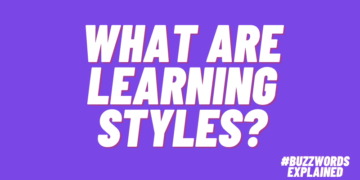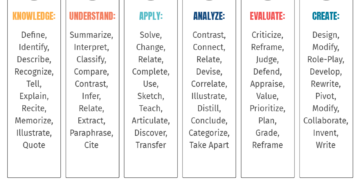Higher education is engulfed in fear, hyperbole, and competing virtue-signaling performances across the political spectrum. Conservatives are viewing the Anti-DEI Trumpian movement as a harbinger of positive regression towards the past collegiate atmosphere, while at the same time, liberals are suggesting the removal of DEI is a return to Jim Crow and segregation. As per usual, both extremist sides are exaggerating, wrong, and attempting to fill all non-believers with existential dread if their particular ideology loses. Unfortunately, what is missed in the overly dramatic fight between DEI and Anti-DEI forces is their totalitarian similarity in wanting to dictate what academics can and cannot do.
The Mandate Quandary with DEI
I would like for you to venture into an uncomfortable thought experiment with me where you are stuck between a rock and a hard place, which is the current location of many professors working in the country. Throughout this article, I want you to contemplate whether it is better to be told what you cannot do or what you are mandated to do. A further philosophical question is, who are these entities or people who think they have the power to tell you either of these things and why do they perceive they have this power?
The dueling dictatorships of DEI and Anti-DEI are supposedly fighting for the soul of higher education within the U.S. Naturally, both sides of the engagement see it as a zero-sum game and that losing this fight means the death knell of higher education and probably the country as a whole. Granted, this sort of false dilemma plays well to the dramatically inclined and the egos of us in higher education. However, professors around the country are being forced to pick a side in this ongoing fight, although we will always find ourselves in a lose-lose situation.
Historical Precedence of DEI
There are a myriad of historical examples throughout American academic history that mirror today’s current grudge match for dominance. Whether we look at the fights during the Red Scare or cancel culture, higher education tends to move away from pragmatism and acceptance and towards groupthink and banishment. This article will delve into the current issue surrounding the prohibition of DEI initiatives in higher education and the equally totalitarian mandates of required DEI praxis in higher education. Both sides of the current divide want us to believe they are fighting for academic freedom and free speech; however, a moment of self-reflection may show them as paradoxically identical in their desire for power over what they perceive should be taught to American college students.
Over the years, there has been a well-known and quiet acceptance that higher education was a more progressive and left-leaning realm. This unspoken dominance has gone unchallenged for many generations, and now that the conservative right is seeking to balance the scales more, all conservative thought is being demonized. The problem with demonizing all counter-left thought is that some logical, common-sense, and good ideas are thus vanquished as hate. This scenario has thus led to real undemocratic and anti-free speech attacks on academia from the far-right as not being taken seriously by outsiders because academics have cried wolf too often.
Modern McCarthyism & Phobic-everything
Florida and Texas were the forerunners in agitating the academic left with their state requirements for posting syllabi for public perusal. Although this type of information sharing and accessibility is generally required of most public bodies, the requirement of syllabi posting for public viewing was deemed as an attack on academic freedom and chilling of free speech from academics. In reality, this is a general principle of working for the public and transparency. However, this became more spotlighted for the general public during the pandemic when K-12 educators complained they could not teach how they wanted if parents could hear them. Unfortunately, it was also an attempt to put the academics on notice that the public was becoming more curious and limiting free speech through transparency. There is a time and place where things can be right for the wrong reasons.
Likewise, the more recent banishments of DEI and critical race theory within states finally created the anti-DEI dictatorship that was accused of existing when states simply required professors to declare what they were teaching publicly. The conservative right used the hysterical response to publicly shared syllabi from faculty as a tool for garnering more credibility from the public. That credibility has now been cashed in in a highly anti-free speech manner in a frontal attack on academic freedom.
DEI is Not a Monolith
DEI is being banned by entire states, which is still a confusing arena because DEI is not a monolith of policies but an idea and concept of action. Adding to this confusion on both sides was the topic of Critical Race Theory, which was originally a law school idea and forsworn by liberal educators as not playing a role in K-12 education until it was banned. Then, suddenly, the removal of CRT was a vicious attack on a supposedly unutilized idea. Even the idea that Title IX was conceived to limit sex discrimination has been convoluted due to the continued redefining of terms, such as sex and gender, and the intentional misuse of said terms by both the political left and right.
The extreme right does not want an educator to be allowed to call a student by the name the student would prefer, and the extreme left wants an educator to be punished/fired if they believe that males, in general, are inherently different from females. These continually petulant arguments have in common that both of these extremes want to deny faculty their freedom of speech and academic freedom. The Anti-DEI movement wants to protest the forced usage of preferred pronouns, anonymous bias hotlines, and mandatory diversity statements as infringements on the sanctity of free speech and academic freedom. On the other hand, DEI proponents argue that allowing professors to use their judgment regarding DEI is the equivalent of laissez-faire Nazism.
Academic Freedom for All
Neither side of these extremist positions holds the moral high ground regarding academic freedom and free speech. The Anti-DEI and DEI positions are antithetical to a faculty or staff members’ freedom to make their own decisions. The tyranny of compliance is striking both ways, and faculty members are caught in the middle with nowhere to turn. Is it moral to pretend historical circumstances do not affect our world today? Is it moral to force individuals to act in a manner that coincides with your ideological perspective? Both sides of this debate only see attacks on academic freedom from the other side but are blind to their transgressions against academia.
College campuses are already some of the most progressive areas in all of the United States, and conflating the removal of a reasonably new idea like DEI will return us all to Jim Crow is grossly inaccurate and makes one wonder if those who make such claims have any understanding of the past at all? Furthermore, those who think the “good ole days” of college life were a paragon of virtue and inclusivity based solely on earned merit are equally ignorant of the past. One of the best pieces of advice I received was that when you hire someone, let them do their jobs, and remember you did not hire children.
About the Author

Dr. John Essington is a Professor of Education and former founder and director of the Center for Teaching and Learning at Blackburn College, specializing in inclusive teaching practices. With a rich background in education, history, and political science, he has actively contributed to the field through numerous publications and presentations on innovative teaching practices and equity in education. Dr. Essington’s work extends beyond academia into significant community service roles, including serving on the school board and various educational committees. His dedication to enhancing teacher preparation and educational outcomes is evident in his leadership in developing inclusive and reflective pedagogical strategies.




















